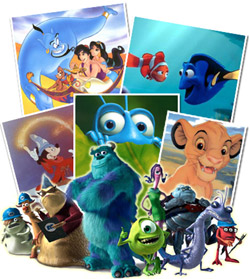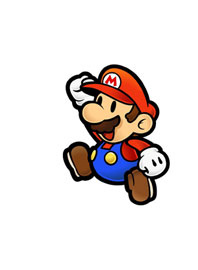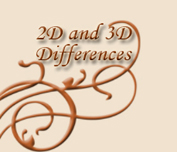|
 In traditional 2D animation, pictures are hand-drawn and every one showing subtle changes from the previous. When played back sequentially, it creates the illusion of motion. In stop motion animation, real life models are moved slightly and filmed. Again, the pictures will create the illusion of motion when played back. In 3D animation, everything is done within the computer and exported from the computer. In traditional 2D animation, pictures are hand-drawn and every one showing subtle changes from the previous. When played back sequentially, it creates the illusion of motion. In stop motion animation, real life models are moved slightly and filmed. Again, the pictures will create the illusion of motion when played back. In 3D animation, everything is done within the computer and exported from the computer.
The process of creating 3D animation can be sequentially divided into three phases: modeling - which describes the process of creating the 3D objects within a scene, layout and animation - which describes how objects are positioned and animated within a scene, and rendering - which describes the final output of the completed computer graphics. Through the combination of the above phases and a few other sub-phases, this completes the process of a 3D animation production.
What’s the Difference between 2D and 3D ?
 The first concept you must grasp is that 3D means 3 dimensional and 2D means 2 dimensional.For 2D animation, everything happens on a 2 dimensional platform. Pictures are flat, without depth and offer only one pespective. Objects and characters are usually drawn without the subtle soft shadows we see in real life and colours have few varying shades. In 3D animation, everything happens on a 3 dimensional platform. Pictures have depth and offer multiple pespectives just like in real life and have soft subtle shadows casted on the objects and characters within. The first concept you must grasp is that 3D means 3 dimensional and 2D means 2 dimensional.For 2D animation, everything happens on a 2 dimensional platform. Pictures are flat, without depth and offer only one pespective. Objects and characters are usually drawn without the subtle soft shadows we see in real life and colours have few varying shades. In 3D animation, everything happens on a 3 dimensional platform. Pictures have depth and offer multiple pespectives just like in real life and have soft subtle shadows casted on the objects and characters within.
 In 2D, characters look cartoonish and unrealisitc. In 3D, characters can look cartoonish but realistic at the same time.roll over to see the difference In 2D, characters look cartoonish and unrealisitc. In 3D, characters can look cartoonish but realistic at the same time.roll over to see the difference
Another way to think of this is to think in terms of a painting and a sculpture. 2D is a painting, and 3D is a sculpture. 3D introduces “depth perspective,” so we not only see a rectangle (2D) but a CUBE (3D). You may also want to think of it like being the difference between a photograph of a glass of water (2D) and being able to reach out and actually pick up the glass of water (3D).
Typically, 2D involves “drawing,” or movement on, say, a flat surface (sketch pad, etc.) or in the vertical and horizontal planes. 3D involves “modeling,” i.e., creating objects in 3-dimensions using a computer software, residing in an expansive virtual environment, complete with lights, reflections, other objects, shadows, etc.
|
